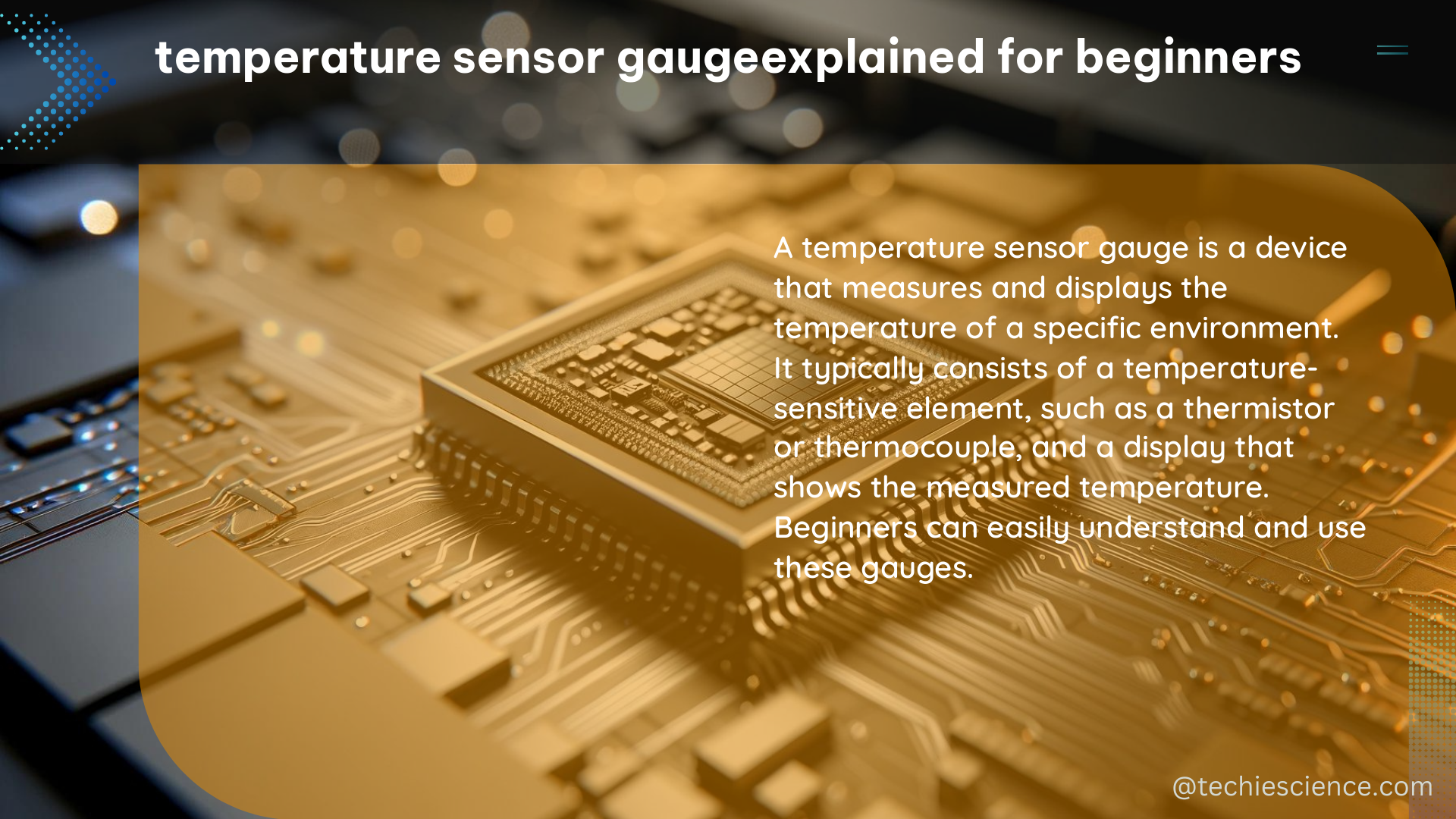A temperature sensor gauge is a crucial device used to measure the temperature of a specific environment or object. It converts the physical property of temperature into an analog or digital signal that can be easily interpreted by humans. This comprehensive guide will delve into the intricacies of temperature sensor gauges, covering the two main types, their technical specifications, and even a DIY project for those interested in building their own.
Understanding the Types of Temperature Sensor Gauges
The two primary types of temperature sensor gauges are Resistance Temperature Detectors (RTDs) and Thermocouples.
Resistance Temperature Detectors (RTDs)
RTDs measure temperature by detecting changes in electrical resistance. As the temperature increases, the electrical resistance of the RTD material (typically platinum, copper, or nickel) also increases. This change in resistance is then converted into a temperature reading. RTDs are known for their high accuracy, stability, and repeatability, making them suitable for applications that require precise temperature measurements.
Thermocouples
Thermocouples, on the other hand, measure temperature by the voltage generated between two dissimilar metals. When the junction of these two metals is exposed to a temperature difference, it creates a small voltage that can be measured and converted into a temperature reading. Thermocouples are generally less accurate than RTDs but are more cost-effective and have a faster response time, making them suitable for applications that require quick temperature monitoring.
Technical Specifications of Temperature Sensor Gauges

When selecting a temperature sensor gauge, it’s essential to consider the following technical specifications:
-
Temperature Range: The range of temperatures that the sensor can accurately measure, typically specified in degrees Celsius or Fahrenheit. This can vary widely, from cryogenic temperatures of -200°C (-328°F) to high-temperature applications exceeding 1,000°C (1,832°F).
-
Accuracy: The degree of error or deviation in the temperature reading, usually expressed as a percentage of the full-scale reading. High-precision temperature sensor gauges can achieve accuracies of ±0.1°C or better.
-
Response Time: The time it takes for the sensor to respond to a change in temperature, typically measured in seconds or milliseconds. Fast response times are crucial for applications that require real-time temperature monitoring, such as in industrial processes or medical equipment.
-
Output Signal: The type of signal the sensor produces, which can be either analog (e.g., 4-20 mA or 0-10 V) or digital (e.g., PWM or RS-485). The choice of output signal depends on the specific requirements of the application and the type of equipment it will be interfaced with.
-
Power Supply: The voltage and current requirements of the sensor, typically specified in volts and amps. This information is essential for ensuring the proper power supply is available for the sensor to function correctly.
-
Environmental Factors: The operating temperature, humidity, and pressure range the sensor can withstand without compromising its performance. This is particularly important when using temperature sensor gauges in harsh or extreme environments.
Temperature Sensor Gauge DIY Project
For those interested in building their own temperature sensor gauge, the Snap! project “Temperature Sensor Gauge” provides a great starting point. This project utilizes an Arduino board and a temperature sensor to create a digital display of the current temperature.
The key components required for this DIY project include:
- Arduino board (e.g., Arduino Uno, Arduino Nano, or Arduino Mega)
- Temperature sensor (e.g., LM35, DS18B20, or DHT11/DHT22)
- Breadboard
- Jumper wires
- Display module (e.g., LCD, OLED, or seven-segment display)
The project requires basic knowledge of electronics and programming, but it can be completed in a few hours, providing a hands-on learning experience in both hardware and software development.
By following the step-by-step instructions and exploring the project’s code, beginners can gain a deeper understanding of how temperature sensor gauges work and how to integrate them into their own projects. This DIY approach not only allows for customization but also helps develop essential skills in electronics and embedded systems.
Conclusion
Temperature sensor gauges are versatile and essential devices used in a wide range of applications, from industrial processes to home automation. By understanding the different types of temperature sensors, their technical specifications, and the possibility of building your own DIY project, you can make informed decisions when selecting and implementing temperature measurement solutions.
Whether you’re a beginner or an experienced engineer, this comprehensive guide on temperature sensor gauges has provided you with the necessary knowledge to navigate the world of temperature measurement and explore the exciting possibilities of hands-on projects.
References
- Snap! Project: Temperature Sensor Gauge
- Resistance Temperature Detectors (RTDs) and Their Measurement
- MIQE Guidelines for qPCR
- Navy Electricity and Electronics Training Series: Principles of Synchros, Servos, and Gyros
- Quantitative vs. Qualitative Data: What’s the Difference?

The lambdageeks.com Core SME Team is a group of experienced subject matter experts from diverse scientific and technical fields including Physics, Chemistry, Technology,Electronics & Electrical Engineering, Automotive, Mechanical Engineering. Our team collaborates to create high-quality, well-researched articles on a wide range of science and technology topics for the lambdageeks.com website.
All Our Senior SME are having more than 7 Years of experience in the respective fields . They are either Working Industry Professionals or assocaited With different Universities. Refer Our Authors Page to get to know About our Core SMEs.